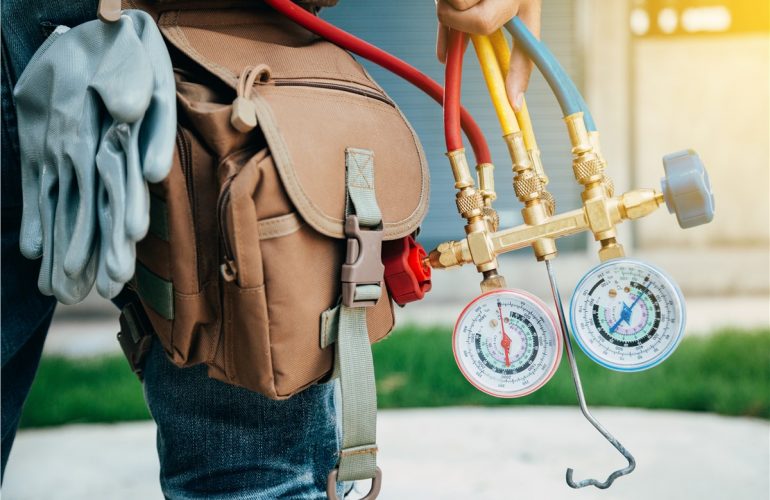Beginning with the HVAC System, what is it? It refers to the heating, ventilating, and air-conditioning system that is important for any building whether it is residential such as apartments, homes, condos, etc., and commercial buildings such as hospitals, hotels, office buildings, universities, schools, etc., and the industrial buildings such as warehouses, factories, manufacturing plants, etc. The sustainability and building performance trends have elevated the systems of HVAC Salt Lake City.
Features
- The HVAC systems assist in controlling the humidity, temperature, and air quality to provide a comfortable indoor environment for both equipment and residents in the buildings.
- The heating is acquired by heating within the building air and this is done using supply air systems or radiator.
- Ventilation is acquired by maintaining clean air and by extracting polluted air out. It keeps the air circulating internally and removes excessive moisture. This is usually accomplished by mechanical systems powered by fans.
- The heating and air conditioning Salt Lake Citymaintains humidity levels and lowers the temperature using water or air-cooled systems.
- An HVAC system provides the desired range of temperature.
The HVAC systems account in commercial buildings for nearly 40% of energy usage. Consequently, any government agency or a commercial building owner aims to improve the efficiency of HVAC to enjoy reduced energy consumption, costs, and greenhouse gas emissions.
HVAC Systems Types
HVAC systems are crucial to be considered during the building of architectural design for the following reasons:
- An HVAC system’s success is related directly to the comfort levels of the building.
- The HVAC systems need enough space for housing, the unit or units and the distribution equipment.
- Installing the HVAC unit is a huge investment.
HVAC systems are a part of the operating expenses in a building. There are several HVAC systems used in the building a few HVAC systems types that are fit in commercial buildings are in three categories.
1. Centralized: A centralized system that supplies the HVAC needs as required for the building.
It is located in a single zone. They are consolidated units that use water typically as a cooling medium, while for air distribution, extensive ductwork is used. The centralized system advantages are easy to control and have increased load-management potential.
The disadvantage is they are expensive to install and are highly sophisticated to maneuver and maintain.
2. Packaged: Packaged HVAC systems are installed in buildings that lack space as separate components. The air conditioning and heating system come as one packaged unit. The HVAC packaged system contains:
- Thermostat/Control interface to get control of the system.
- Heat pump/air conditioner together in one unit with a fan coil/evaporator.
- Optional air quality improvers. Things such as the cleaners, air purifiers, UV lamps or ventilators, clean the air before it circulates your office or home.
3. Individual: The individual HVAC system is also known as the decentralized system. It provides energy in different locations of a building using several individual units.
The self-contained unit packages are the air conditioning units used in the rooms, the rooftop HVAC system, and the air-to-air heaters.
The individual units’ advantages are they need lower investments and are easy to control. However, in the large buildings, the individual systems are a maintenance nightmare, in case there are many systems spread across the building. Thus, it is crucial to consolidate the systems that are prone to leak or break, as replacing is expensive.
HVAC Systems and Improvements in Energy Efficiency
The HVAC systems assure high-energy usage in buildings to the extent that every facility can enjoy increased energy and cost savings. This is possible by improving the operations of HVAC through installation, proper design, and scheduled maintenance.
Here are a few suggestions to improve the HVAC system efficiency:
- Designing: The design of the HVAC system goes with the building architecture. The energy code requirements are met by the Energy Department. It is important to consider installing large equipment. In the HVAC system, sizing is the main consideration as it allows room for uncertainties. It prevents wasteful and excessive capacity by using the modular equipment so that if the need arises, it can be expanded.
- Tuning: Scheduling HVAC systems bi-annual maintenance is done by licensed personnel. The maintenance tasks include:
- Air filters replacement
- Inspecting and heating repair Salt Lake City
- Repair of fan motors and air ducts
- Inspect the piping and ducts to avoid damage or leakage
- Annually check the furnace
Improving the efficiency of the HVAC system includes efficiency settings, programmable thermostats, and energy management systems.
